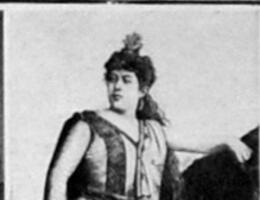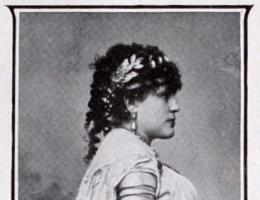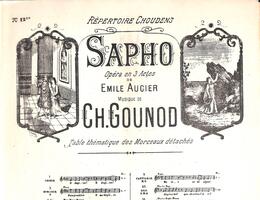Sapho
Gounod’s first opera owed its genesis to Pauline Viardot, whom he had met in Rome in 1839. The famous singer suggested the subject of Sapho and ensured its production at the Paris Opéra. Premiered on 16 April 1851, this three-act work was withdrawn after nine performances, despite starring Viardot in the title role and receiving an encouraging reception from the critics. Gounod revised the work several times before 1884, the date of the final four-act version. He was not helped by the mediocre libretto by Émile Augier, based on the figure of the ancient Greek poetess from Mytilene and the legend told by Ovid. According to the Latin poet, Sappho, the mistress of Phaon, threw herself into the sea from the top of the Rock of Lefkada. As in grand opera, the libretto combines romantic quarrels with political intrigue. Joining forces with Pythéas, Phaon plots to overthrow the tyrant Pittacus. Falling in love with Sapho, he deserts Glycère, who then seduces Pythéas and discovers the conspiracy. Demanding that the conspirators go into exile in exchange for her silence, Sapho’s rival also insists that she rejects Phaon. The poetess obeys, then leaps to her death in the sea. Although Gounod may not have imbued the action scenes with enough dramatic intensity, he excelled in the arias. In fact, Act III, in which the fate of the characters is already sealed, earned Berlioz’s admiration: “Everything here is musical, grand, harmonious, well-designed, very neat, equally correct and profound in expression.” The “Stances” soliloquy sung by Sapho before her death (“Ô, ma lyre immortelle”) is justifiably one of the most famous numbers in French opera.
Scientific publications
Publication




